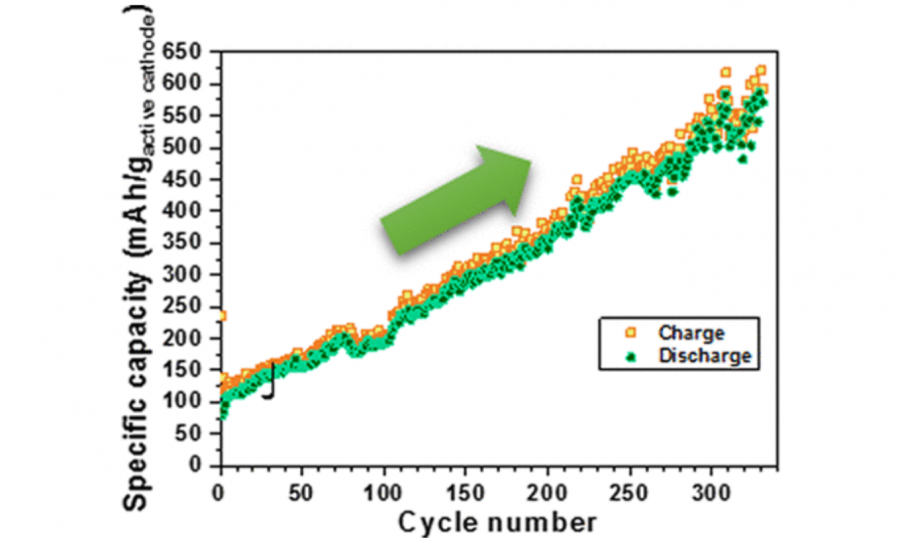But extraordinary claims require extraordinary evidence
We’ve seen so many incredible claims about energy storage over the years that our battery breakthrough baloney detectors are practically on a hair trigger. So when we first heard that researchers published a paper in the Journal of the American Chemical Society (JACS) saying that a new solid-state cell actually gained energy capacity over time, flashing red lights and sirens were set off and a robot started rolling the office yelling “Danger, Will Robinson!”
Better batteries abound
But then we noticed one of the names attached to the scholarly work belonged to one John B. Goodenough, co-inventor of the lithium battery that powers the plug-in vehicles we love. We switched off the sirens and flashing light, and rolled the robot back into its box and took a look for ourselves.
From what we can tell, this appears to be at least related to the battery breakthrough announced last year, in that it too is a solid-state cell that uses a glass electrolyte. This time around, though, a “lithium anode and a plasticizer in contact with a conventional, low cost oxide host cathode” are in play. Also, it contains no cobalt and can apparently by cycled — charged and discharged — an incredible 23,000 times.
Chemistry aside, the claim that this cell improves its energy storage ability really goes against what we thought we knew about battery materials. Typically, a cell’s ability to hold energy decreases as the constant barrage of lithium ions into and out of its electrodes tends to degrade them. As the image above indicates, they observed this phenomenon over the course of 329 cycles.
While we can only hope that this research is onto something, some grains of salt are in order. Axios, which reported this story, got in touch with six other researchers, none of whom had ever seen this sort of thing happen outside an odd anomaly. They also expressed other doubts about the claims.
Lead researcher Maria Helena Braga is confident in their finding though, saying time is on their side, and that, “Data is data and we have similar data from many different cells, in four different instruments, different labs, glove box. And at the end of the day, the LEDs are lit for days with a very small amount of active material after having cycled for more than 23,000 times.”
While we can only hope this is some substance to the claims, there is no doubt that there’s a long path from the lab to the commercial production. But, we’ll certainly keep our eyes peeled for any updates.
Source: Axios

